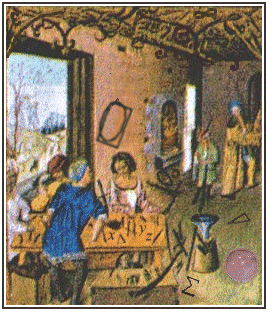
Introduction: A Parable of Precalculus

Studying precalculus is like crossing a bridge. You're between two worlds; one old, one new.
On one side of the bridge is an ancient land that was inhabited long ago, long before the bridge itself could even be imagined. Over many centuries, mathematical settlements formed there. They grew into kingdoms with names like Arithmetic, Algebra, Geometry, and Trigonometry...
Each kingdom developed its own tools, its own laws, and its own methods for doing business. Mathematical guilds evolved, and through slow refinement of their techniques they were eventually able to craft elegant solutions to many mathematical problems, both real and imagined.
Still, attempts to solve other, practical problems only snapped, crumbled, and broke. The tools and the methods of the individual guilds were too crude.
It took time for a network of communication to develop among the separate guilds. Slowly, however, the network turned into trade roads, and the kingdoms coalesced into the multi-cultural city-state of Modern Mathematics.
In the new metropolis, tracts by the likes of Leibniz, Newton, and Seki were circulated. These tracts contained intricate diagrams and detailed calculations, parts of a revolutionary blueprint for what would become "The Bridge".
But there were many obstacles to these visionary plans. The bridge took several centuries to construct...
Where it finally led, however, was a wonderous place, a fertile land spreading to the horizon in every direction. Settlers crossing the bridge called this new place: Calculus.
In Calculus, ancient mathematical guilds found new life, working together to solve problems from virtually every area of inquiry. Old tools were forged into instruments of tremendous power, and massive projects of engineering were undertaken.
The bridge itself came to be called Precalculus. Today, anyone wishing to cross the bridge must still serve an apprenticeship among the well-worn shop benches in the guilds of Arithmetic, Algebra, Geometry, and Trigonometry. This is how one pays the toll. This is the only way to reach the opportunities on the other side.
Of course you are eager to cross, and see for yourself this wonderous place. But you must be patient...
When you do make your passage, take time to stop and look from the bridge's highest heights, rising between the two lands, between the old and the new, between your own mathematical apprenticeship and your mathematical maturity. The view is quite incredible, and getting across is part of the fun.
|
|
|
|
| Back to Contents | ||